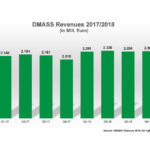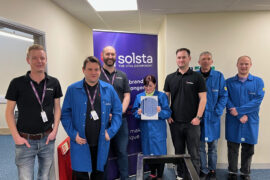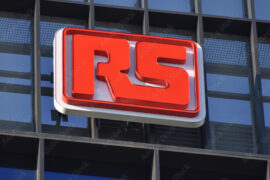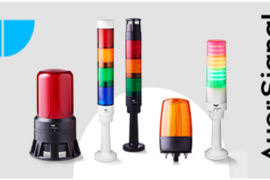Arrow Electronics has posted fourth-quarter 2018 sales of $7.92bn, an increase of 5% from sales of $7.54bn in the fourth quarter of 2017. Fourth-quarter net income of $231m, compared with net income of $54m in the fourth quarter of 2017.
“We are helping customers create, make, and manage their electronic products at unmatched scale. This is driving tremendous growth for our suppliers, and for Arrow, as evidenced by our second consecutive year of growing sales by more than $3bn,” said Michael J. Long (pictured), chairman, president, and chief executive officer. “We are proud to be enabling next-generation technologies and products that are making our world better.”
Global components fourth-quarter sales of $5.26bn increased 6% year over year. Americas components sales increased 5% year over year. Europe components sales increased 9% year over year. Sales in the region, as adjusted, increased 13% year over year. Asia-Pacific components sales increased 7% year over year. “We are well-aligned to the long-term trends of growing electronic content in key end markets such as transportation, industrial, and aerospace and defence,” said Long.
Global enterprise computing solutions fourth-quarter sales of $2.66bn increased 2% year over year. Global enterprise computing solutions sales, as adjusted, increased 6% year over year. Americas sales increased 4% year over year. Sales in the region, as adjusted, increased 9% year over year. Europe sales decreased 1 percent year over year. Sales in the region, as adjusted, were flat year over year. “We have positioned the company to lead the edge computing paradigm with our leading software, hardware, and security capabilities,” added Long.
Arrow’s full-year 2018 result show sales increased 12% to $29.68bn from sales of $26.55 billion in 2017. Net income for 2018 was $716 million compared with net income of $402 million.
In a conference call with analysts hosed by seekingalpha.com, Long discussed the company’s long-term strategy.
“You have seen IoT allow Arrow to bring cross-enterprise solutions together to serve our customers. Now, the rise of edge computing is just as important. Companies are changing, how they do business and how they run operations. Bridging the gap between IT systems and operational technology systems is totally the key. Arrow is helping customers tackle this complex challenge,” he commented.
“Manufacturing plants and industrial machines have been digitised to increase efficiency,” Long continued. “These systems use sensors, logic controllers, communication gateways and human machine interfaces. Collectively these are operations technology or OT. Unlike when IT systems go down OT failures can be catastrophic. We see this difference as the biggest gap in IT and OT. OT systems are islands of control and often do not interact with other parts of the organisation.”
He added, “Edge computing allows organisations to benefit immensely by integrating the two worlds, companies need to address security, business analytics, services and artificial intelligence holistically and not as silos of IT and OT. This will bring greater flexibility and efficiency. More importantly IT and OT convergence enables real-time decision-making. This will dramatically change the way enterprises operate and the use of data for business management. Bridging IT and OT is transformative for any business.”
Long conclude, “Arrow has been helping customers by leading the transformation programs that use technologies and solutions across both IT and OT. In fact, we’re one of the few companies with expertise in both areas. In the next few years, we’ll see more devices deployed at the edge more connected IT and OT systems coming together to benefit business, governments and consumers and we’re excited to help drive that transformation.”











Comments are closed.